Beaux Arts Trio - Haydn: Complete Piano Trios (9CD BoxSet) (1997)
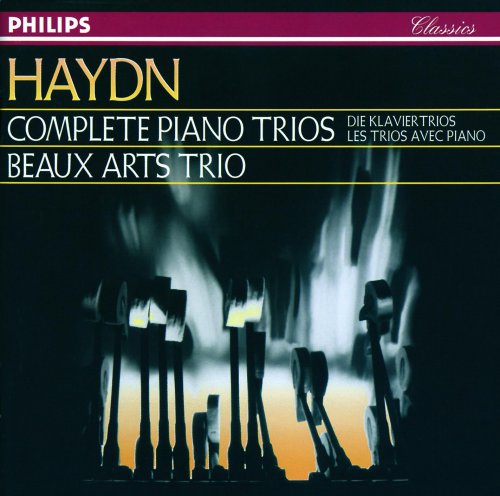
Artist: Beaux Arts Trio
Title: Haydn: Complete Piano Trios
Year Of Release: 1997
Label: Philips
Genre: Classical
Quality: FLAC (tracks)
Total Time: 10:34:13
Total Size: 2.9 Gb
WebSite: Album Preview
Tracklist: Title: Haydn: Complete Piano Trios
Year Of Release: 1997
Label: Philips
Genre: Classical
Quality: FLAC (tracks)
Total Time: 10:34:13
Total Size: 2.9 Gb
WebSite: Album Preview
CD 1:
1. Piano Trio in F, H.XV No.37 - 1. Adagio
2. Piano Trio in F, H.XV No.37 - 2. Allegro molto
3. Piano Trio in F, H.XV No.37 - 3. Menuet
4. Piano Trio in C, H.XV No.C1 - 1. Allegro moderatо
5. Piano Trio in C, H.XV No.C1 - 2. Menuet
6. Piano Trio in C, H.XV No.C1 - 3. Andante con variazioni
7. Piano Trio in G, H.XIV No.6/H.XVI No.6 - 1. Allegro
8. Piano Trio in G, H.XIV No.6/H.XVI No.6 - 2. Adagio
9. Piano Trio in G, H.XIV No.6/H.XVI No.6 - 3. Menuetto
10. Piano Trio in F, H.XV No.39 - 1. Allegro
11. Piano Trio in F, H.XV No.39 - 2. Andantе
12. Piano Trio in F, H.XV No.39 - 3. Allegro
13. Piano Trio in F, H.XV No.39 - 4. Menuetto
14. Piano Trio in F, H.XV No.39 - 5. Scherzo
15. Piano Trio in G minor, H.XV No.1 - 1. Moderato
16. Piano Trio in G minor, H.XV No.1 - 2. Menuet
17. Piano Trio in G minor, H.XV No.1 - 3. Presto
CD 2:
1. Piano Trio in F, H.XV No.40 - 1. Moderato
2. Piano Trio in F, H.XV No.40 - 2. Menuet
3. Piano Trio in F, H.XV No.40 - 3. Finale
4. Piano Trio in G, H.XV No.41 - 1. Allegro
5. Piano Trio in G, H.XV No.41 - 2. Menuet
6. Piano Trio in G, H.XV No.41 - 3. Adagio
7. Piano Trio in G, H.XV No.41 - 4. Finale (presto)
8. Piano Trio in A, H.XV No.35 - 1. Capriccio
9. Piano Trio in A, H.XV No.35 - 2. Menuet
10. Piano Trio in A, H.XV No.35 - 3. Finale (Allegro)
11. Piano Trio in E, H.XV No.34 - 1. Allegro moderato
12. Piano Trio in E, H.XV No.34 - 2. Menuet
13. Piano Trio in E, H.XV No.34 - 3. Finale (Presto)
14. Piano Trio in E flat, H.XV No.36 - 1. Allegro moderato
15. Piano Trio in E flat, H.XV No.36 - 2. Polones
16. Piano Trio in E flat, H.XV No.36 - 3. Finale (Allegro molto)
17. Piano Trio in B flat, H.XV No.38 - 1. Allegro moderato
18. Piano Trio in B flat, H.XV No.38 - 2. Menuet
19. Piano Trio in B flat, H.XV No.38 - 3. Finale (Presto)
CD 3:
1. Piano Trio in F minor, H.XV No.f1 - 1. Allegro moderato
2. Piano Trio in F minor, H.XV No.f1 - 2. Menuet
3. Piano Trio in F minor, H.XV No.f1 - 3. Finale
4. Piano Trio in D, H.deest - 1. Allegro molto
5. Piano Trio in C, H.XIV No.C1 - 1. Adagio - Presto
6. Piano Trio in C, H.XIV No.C1 - 2. Menuet
7. Piano Trio in C, H.XIV No.C1 - 3. Finale
8. Piano Trio in F, H.XV No.2 - 1. Allegro moderato
9. Piano Trio in F, H.XV No.2 - 2. Menuetto (Allegretto)
10. Piano Trio in F, H.XV No.2 - 3. Finale (Adagio con variazioni)
11. Piano Trio in G, H.XV No.5 - 1. Adagio non tanto
12. Piano Trio in G, H.XV No.5 - 2. Allegro
13. Piano Trio in G, H.XV No.5 - 3. Allegro
14. Piano Trio in F, H.XV No.6 - 1. Vivace
15. Piano Trio in F, H.XV No.6 - 2. Tempo di menuetto
CD 4:
1. Piano Trio in D, H.XV No.7 - 1. Andante con variazioni
2. Piano Trio in D, H.XV No.7 - 2. Andante
3. Piano Trio in D, H.XV No.7 - 3. Allegro assai
4. Piano Trio in B flat, H.XV No.8 - 1. Allegro moderato
5. Piano Trio in B flat, H.XV No.8 - 2. Tempo di menuetto
6. Piano Trio in A, H.XV No.9 - 1. Adagio
7. Piano Trio in A, H.XV No.9 - 2. Vivace
8. Piano Trio in E flat, H.XV No.10 - 1. Allegro moderato
9. Piano Trio in E flat, H.XV No.10 - 2. Presto
10. Piano Trio in E flat, H.XV No.11 - 1. Allegro moderato
11. Piano Trio in E flat, H.XV No.11 - 2. Tempo di menuetto
CD 5:
1. Piano Trio in E minor, H.XV No.12 - 1. Allegro moderato
2. Piano Trio in E minor, H.XV No.12 - 2. Andante
3. Piano Trio in E minor, H.XV No.12 - 3. Rondo (Presto)
4. Piano Trio in C minor, H.XV No.13 - 1. Andante
5. Piano Trio in C minor, H.XV No.13 - 2. Allegro spiritoso
6. Piano Trio in A flat, H.XV No.14 - 1. Allegro moderato
7. Piano Trio in A flat, H.XV No.14 - 2. Adagio
8. Piano Trio in A flat, H.XV No.14 - 3. Rondo (Vivace)
9. Piano Trio in D, H.XV No.16 - 1. Allegro
10. Piano Trio in D, H.XV No.16 - 2. Andantino più tosto allegretto
11. Piano Trio in D, H.XV No.16 - 3. Vivace assai
CD 6:
1. Piano Trio in G, H.XV No.15 - 1. Allegro
2. Piano Trio in G, H.XV No.15 - 2. Andante
3. Piano Trio in G, H.XV No.15 - 3. Finale (Allegro moderato)
4. Piano Trio in F, H.XV No.17 - 1. Allegro
5. Piano Trio in F, H.XV No.17 - 2. Finale (Tempo di menuetto)
6. Piano Trio in G, H.XV No.32 - 1. Andante
7. Piano Trio in G, H.XV No.32 - 2. Allegro
8. Piano Trio in A, H.XV No.18 - 1. Allegro moderato
9. Piano Trio in A, H.XV No.18 - 2. Andante
10. Piano Trio in A, H.XV No.18 - 3. Allegro
11. Piano Trio in G minor, H.XV No.19 - 1. Andante - Presto
12. Piano Trio in G minor, H.XV No.19 - 2. Adagio, ma non troppo
13. Piano Trio in G minor, H.XV No.19 - 3. Presto
CD 7:
1. Piano Trio in B flat, H.XV No.20 - 1. Allegro
2. Piano Trio in B flat, H.XV No.20 - 2. Andante cantabile
3. Piano Trio in B flat, H.XV No.20 - 3. Finale (Allegro)
4. Piano Trio in C, H.XV No.21 - 1. Adagio pastorale - Vivace assai
5. Piano Trio in C, H.XV No.21 - 2. Molto andante
6. Piano Trio in C, H.XV No.21 - 3. Finale (Presto)
7. Piano Trio in E flat, H.XV No.22 - 1. Allegro moderato
8. Piano Trio in E flat, H.XV No.22 - 2. Poco adagio
9. Piano Trio in E flat, H.XV No.22 - 3. Finale (Allegro)
10. Piano Trio in D minor, H.XV No.23 - 1. Molto andante
11. Piano Trio in D minor, H.XV No.23 - 2. Adagio ma non troppo
12. Piano Trio in D minor, H.XV No.23 - 3. Finale (Vivace)
CD 8:
1. Piano Trio in D, H.XV No.24 - 1. Allegro
2. Piano Trio in D, H.XV No.24 - 2. Andante
3. Piano Trio in D, H.XV No.24 - 3. Allegro, ma dolce
4. Piano Trio in G, H. XV No.25 - "Gipsy" - 1. Andante
5. Piano Trio in G, H. XV No.25 - "Gipsy" - 2. Poco adagio. Cantabile
6. Piano Trio in G, H. XV No.25 - "Gipsy" - 3. Rondo all'Ongarese (Presto)
7. Piano Trio in F sharp minor, H.XV No.26 - 1. Allegro
8. Piano Trio in F sharp minor, H.XV No.26 - 2. Adagio cantabile
9. Piano Trio in F sharp minor, H.XV No.26 - 3. Tempo di menuetto
10. Piano Trio in E flat minor, H.XV No.31 - 1. Andante cantabile
11. Piano Trio in E flat minor, H.XV No.31 - 2. Allegro
CD 9:
1. Piano Trio in E flat, H.XV No.30 - 1. Allegro moderato
2. Piano Trio in E flat, H.XV No.30 - 2. Andante con moto
3. Piano Trio in E flat, H.XV No.30 - 3. Presto
4. Piano Trio in C, H.XV No.27 - 1. Allegro
5. Piano Trio in C, H.XV No.27 - 2. Andante
6. Piano Trio in C, H.XV No.27 - 3. Finale (Presto)
7. Piano Trio in E, H.XV No.28 - 1. Allegro moderato
8. Piano Trio in E, H.XV No.28 - 2. Allegretto
9. Piano Trio in E, H.XV No.28 - 3. Finale (Allegro)
10. Piano Trio in E flat, H.XV No.29 - 1. Poco allegretto
11. Piano Trio in E flat, H.XV No.29 - 2. Andantino ed innocentemente
12. Piano Trio in E flat, H.XV No.29 - 3. Finale: Allemande (Presto assai)
Performers
Beaux Arts Trio:
Menahem Pressler, piano
Bernard Greenhouse, violoncello
Isidore Cohen, violin
The 1970s were heady years indeed for the Haydn collector, with complete recorded cycles of the symphonies, quartets and keyboard works and the first-ever recordings of many of the operas. Attracting less immediate attention than these boxed sets were the activities of the Beaux Arts Trio who, proceeding by stealth with one disc at a time, recorded Haydn's complete piano trios between 1970 and 1978. And complete their set is, with a vengeance, including not only all the authentic trios in the old standard editions but also a dozen early works (one or two of them doubtful) printed in the new Critical Edition by H. C. Robbins Landon. The Beaux Arts' performances of some of the late trios have already been issued on disc; but the CD incarnation of the complete cycle has long been overdue, especially as many of the works are otherwise unrepresented in the catalogue and have serious rarity value in the concert-hall.
As champions of Haydn's trios, from Tovey onwards, have lamented, their conception as essentially accompanied piano sonatas, with the cello almost invariably doubling the keyboard bass, has deterred many groups from investigating their undoubted musical riches—though Charles Rosen has observed that when cellists can be persuaded to play one of the trios they are surprised to discover how interesting their parts are. Frankly, most of the works on the first three discs, here, almost all dating from the 1760s, or even earlier (which for a late developer like Haydn means pre-puberty), are no more than agreeable background music, though there are exceptions, both whole works like the severe, neo-baroque G minor (No. 1 in Hoboken's catalogue), and individual movements such as the spacious, florid Adagio from the G major, No. 41, and the beautiful minor-key trios in several of the minuets. But the remaining six discs, devoted to works composed in the 1780s and 1790s, contain some of Haydn's most imaginative, adventurous and intensely lyrical music. Two outstanding works from the 1780s are the E minor, No. 12, with its dramatic, closely worked first movement (the recapitulation remains in the minor throughout, with a Mozartian passion and pathos) and No. 14 in A flat, with its leisurely, discursive opening movement and exquisitely tender Adagio in a remote E major that leads without a break into one of Haydn's most hilariously quixotic finales.
The 14 trios of the 1790s, composed during and just after the second London sojourn, are so consistently inspired that it is almost invidious to cite individual works. They range from relaxed, intimate pieces like the E flat, No. 29, through the sombre, almost tragic F sharp minor, No. 26, to the C major, No. 27, unsurpassed in the whole series for its intellectual and virtuoso brilliance. If I had to pick among these masterpieces, I should single out the E major, No. 28, for the lyrical radiance and harmonic vision of its outer movements, its astonishing central E minor passacaglia and the fantastic sonorities Haydn conjures from his three instruments; and the E flat, No. 30, with its noble, expansive first movement (a reckless abundance of themes here, as in several other late trios), its deep-toned, often richly chromatic Andante and its glorious German-dance finale, quintessentially Haydnesque in its mingling of bucolic boisterousness, virtuosity and sophisticated workmanship.
When the Beaux Arts' cycle of trios was finally completed it received almost universal accolades, including Gramophone's 1979 Record of the Year award. Their playing throughout is indeed distinguished: vital, refined and sharply responsive to the music's teeming richness and variety. The early trios were conceived for harpsichord, though such is the deftness and delicacy of Menahem Pressler's touch here that there is no question of the music being overpowered by the modern Steinway; and among many individual felicities in the group's performances of these early works I should mention their gentle, affectionate way with the central minuets, underlining their dual function as dances and surrogate slow movements. In the later trios they catch beautifully the leisurely, almost improvisatory feel of opening movements like those of Nos. 14 and 18, and bring a ruminative intensity, and a wonderful quality of soft playing, to the great slow movements, while the more exuberant finales like those in Nos. 19, 22, 25 (the famous 'gipsy rondo') and 27 have immense brio, wit and virtuosity, with ideally clean, crisp articulation from Pressler.
There are, perhaps inevitably in a project of this scale, occasional disappointments. Here and there in the earlier works I felt the Beaux Arts' phrasing over-inflected, too knowing for this guileless music—the opening violin solo in No. 2 is a case in point. Among the mature trios two of the most searching first movements, both in the minor, seem to me underplayed: in that of No. 12 the tension sags too easily, while that in the F sharp minor, No. 26, sounds too lightweight, even skittish, with Pressler blithely tossing off the triplet semiquavers. The opening movement of No. 30, on the other hand, struck me as a shade rigid and over-emphatic, needing a more generous tempo and a greater elasticity of rhythm; and I was unconvinced by the Beaux Arts in both the first and second movements of the sublime E major, No. 28: the first is too brisk, at times inclining to glibness, while in the second they take an extraordinarily ponderous view of Haydn's Allegretto. I suppose I should also mention that the Beaux Arts are occasionally cavalier in their observance of repeats, as in the opening variations of No. 19 and the finale of No. 21. Still, I wouldn't want to exaggerate these misgivings. Six of the nine discs here contain well over an hour of glorious, enriching music, much of the playing is extraordinarily felicitous, and the recording has Philips's customary warmth and refinement—even if I would have preferred a slightly less discreet balancing of the cello. £70 or so may seem a lot to fork out all at once; but, as RL suggested back in 1979, this is a set that should last a lifetime.'
As champions of Haydn's trios, from Tovey onwards, have lamented, their conception as essentially accompanied piano sonatas, with the cello almost invariably doubling the keyboard bass, has deterred many groups from investigating their undoubted musical riches—though Charles Rosen has observed that when cellists can be persuaded to play one of the trios they are surprised to discover how interesting their parts are. Frankly, most of the works on the first three discs, here, almost all dating from the 1760s, or even earlier (which for a late developer like Haydn means pre-puberty), are no more than agreeable background music, though there are exceptions, both whole works like the severe, neo-baroque G minor (No. 1 in Hoboken's catalogue), and individual movements such as the spacious, florid Adagio from the G major, No. 41, and the beautiful minor-key trios in several of the minuets. But the remaining six discs, devoted to works composed in the 1780s and 1790s, contain some of Haydn's most imaginative, adventurous and intensely lyrical music. Two outstanding works from the 1780s are the E minor, No. 12, with its dramatic, closely worked first movement (the recapitulation remains in the minor throughout, with a Mozartian passion and pathos) and No. 14 in A flat, with its leisurely, discursive opening movement and exquisitely tender Adagio in a remote E major that leads without a break into one of Haydn's most hilariously quixotic finales.
The 14 trios of the 1790s, composed during and just after the second London sojourn, are so consistently inspired that it is almost invidious to cite individual works. They range from relaxed, intimate pieces like the E flat, No. 29, through the sombre, almost tragic F sharp minor, No. 26, to the C major, No. 27, unsurpassed in the whole series for its intellectual and virtuoso brilliance. If I had to pick among these masterpieces, I should single out the E major, No. 28, for the lyrical radiance and harmonic vision of its outer movements, its astonishing central E minor passacaglia and the fantastic sonorities Haydn conjures from his three instruments; and the E flat, No. 30, with its noble, expansive first movement (a reckless abundance of themes here, as in several other late trios), its deep-toned, often richly chromatic Andante and its glorious German-dance finale, quintessentially Haydnesque in its mingling of bucolic boisterousness, virtuosity and sophisticated workmanship.
When the Beaux Arts' cycle of trios was finally completed it received almost universal accolades, including Gramophone's 1979 Record of the Year award. Their playing throughout is indeed distinguished: vital, refined and sharply responsive to the music's teeming richness and variety. The early trios were conceived for harpsichord, though such is the deftness and delicacy of Menahem Pressler's touch here that there is no question of the music being overpowered by the modern Steinway; and among many individual felicities in the group's performances of these early works I should mention their gentle, affectionate way with the central minuets, underlining their dual function as dances and surrogate slow movements. In the later trios they catch beautifully the leisurely, almost improvisatory feel of opening movements like those of Nos. 14 and 18, and bring a ruminative intensity, and a wonderful quality of soft playing, to the great slow movements, while the more exuberant finales like those in Nos. 19, 22, 25 (the famous 'gipsy rondo') and 27 have immense brio, wit and virtuosity, with ideally clean, crisp articulation from Pressler.
There are, perhaps inevitably in a project of this scale, occasional disappointments. Here and there in the earlier works I felt the Beaux Arts' phrasing over-inflected, too knowing for this guileless music—the opening violin solo in No. 2 is a case in point. Among the mature trios two of the most searching first movements, both in the minor, seem to me underplayed: in that of No. 12 the tension sags too easily, while that in the F sharp minor, No. 26, sounds too lightweight, even skittish, with Pressler blithely tossing off the triplet semiquavers. The opening movement of No. 30, on the other hand, struck me as a shade rigid and over-emphatic, needing a more generous tempo and a greater elasticity of rhythm; and I was unconvinced by the Beaux Arts in both the first and second movements of the sublime E major, No. 28: the first is too brisk, at times inclining to glibness, while in the second they take an extraordinarily ponderous view of Haydn's Allegretto. I suppose I should also mention that the Beaux Arts are occasionally cavalier in their observance of repeats, as in the opening variations of No. 19 and the finale of No. 21. Still, I wouldn't want to exaggerate these misgivings. Six of the nine discs here contain well over an hour of glorious, enriching music, much of the playing is extraordinarily felicitous, and the recording has Philips's customary warmth and refinement—even if I would have preferred a slightly less discreet balancing of the cello. £70 or so may seem a lot to fork out all at once; but, as RL suggested back in 1979, this is a set that should last a lifetime.'
DOWNLOAD FROM ISRA.CLOUD
CD1 Beaux Arts Trio Haydn Complete Piano Trios.rar - 348.6 MB
CD2 Beaux Arts Trio Haydn Complete Piano Trios.rar - 339.7 MB
CD3 Beaux Arts Trio Haydn Complete Piano Trios.rar - 311.8 MB
CD4 Beaux Arts Trio Haydn Complete Piano Trios.rar - 293.8 MB
CD5 Beaux Arts Trio Haydn Complete Piano Trios.rar - 359.7 MB
CD6 Beaux Arts Trio Haydn Complete Piano Trios.rar - 379.4 MB
CD7 Beaux Arts Trio Haydn Complete Piano Trios.rar - 319.4 MB
CD8 Beaux Arts Trio Haydn Complete Piano Trios.rar - 286.9 MB
CD9 Beaux Arts Trio Haydn Complete Piano Trios.rar - 336.3 MB
CD1 Beaux Arts Trio Haydn Complete Piano Trios.rar - 348.6 MB
CD2 Beaux Arts Trio Haydn Complete Piano Trios.rar - 339.7 MB
CD3 Beaux Arts Trio Haydn Complete Piano Trios.rar - 311.8 MB
CD4 Beaux Arts Trio Haydn Complete Piano Trios.rar - 293.8 MB
CD5 Beaux Arts Trio Haydn Complete Piano Trios.rar - 359.7 MB
CD6 Beaux Arts Trio Haydn Complete Piano Trios.rar - 379.4 MB
CD7 Beaux Arts Trio Haydn Complete Piano Trios.rar - 319.4 MB
CD8 Beaux Arts Trio Haydn Complete Piano Trios.rar - 286.9 MB
CD9 Beaux Arts Trio Haydn Complete Piano Trios.rar - 336.3 MB
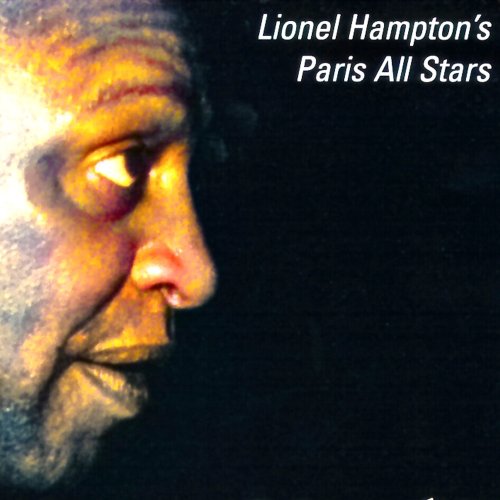
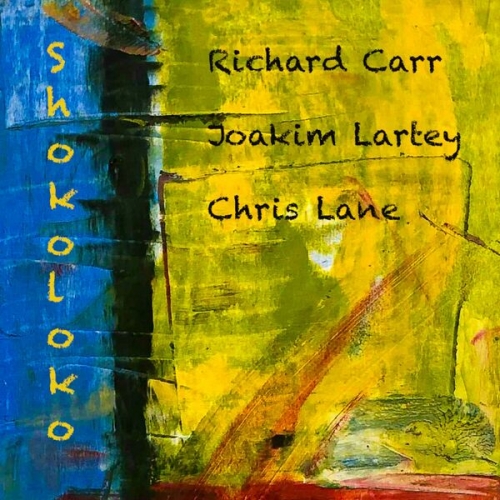
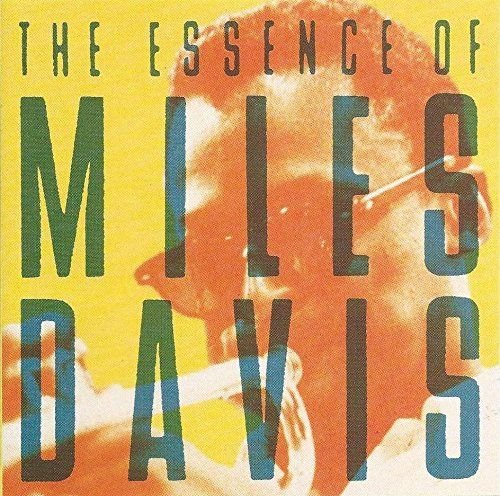
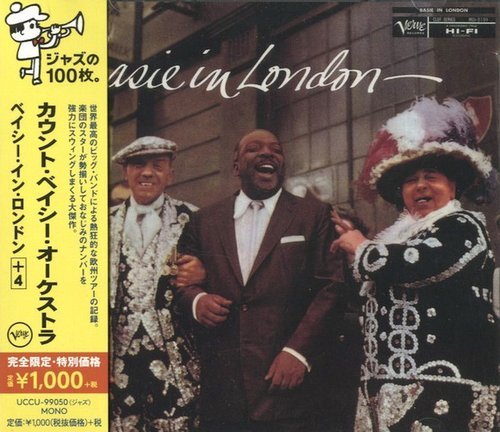
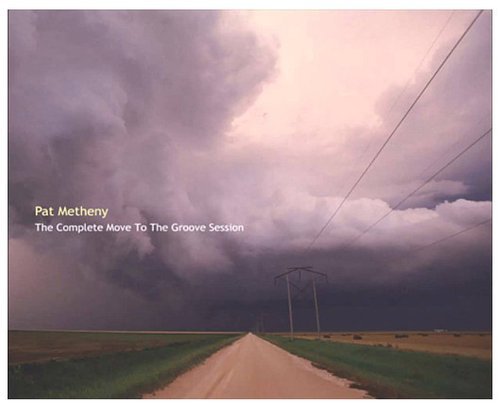

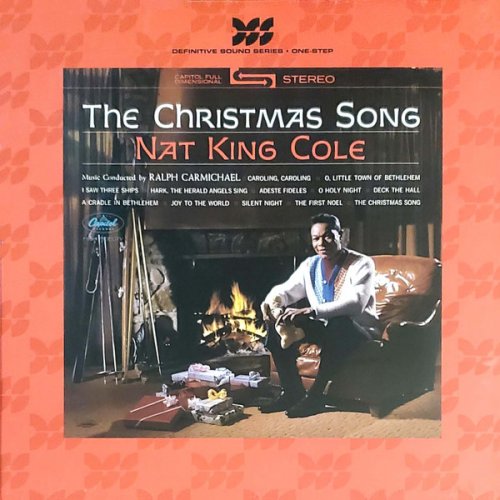
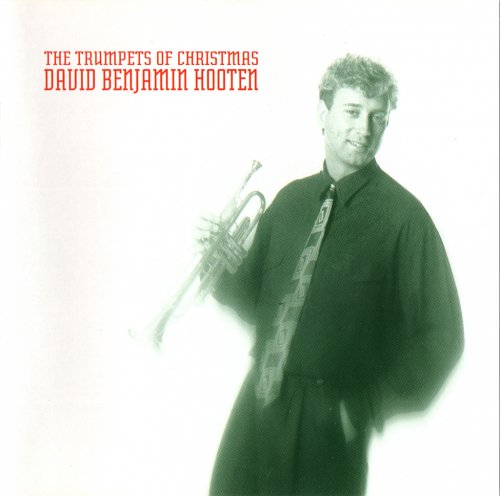
![Iman Spaargaren & Peter Bjørnild - In Essence (2025) [DSD256] Iman Spaargaren & Peter Bjørnild - In Essence (2025) [DSD256]](https://www.dibpic.com/uploads/posts/2025-12/1766381912_cover.jpg)